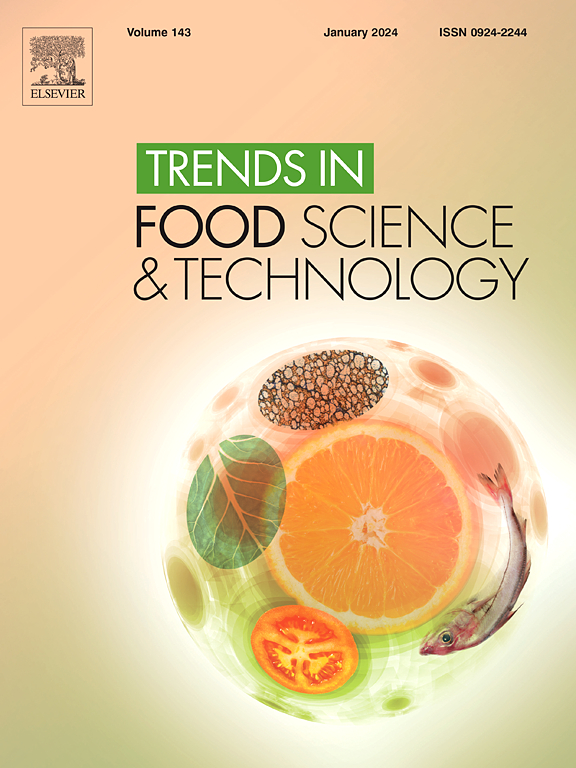Harnessing AI for enhanced screening of antimicrobial bioactive compounds in food safety and preservation
IF 15.1
1区 农林科学
Q1 FOOD SCIENCE & TECHNOLOGY
引用次数: 0
Abstract
Background
Microbial contamination in the global food industry, driven by the increasing foodborne illness and food spoilage, brought the antimicrobial bioactive compounds into focus. The conventional screening methods are time-consuming, labour-intensive, and costly. Artificial intelligence (AI) and machine learning (ML) algorithms can efficiently screen top-performance candidates, appearing as transformative tools in the discovery of antimicrobials.
Scope and approach
We assess traditional methods for screening antimicrobial agents, categorizing them according to the diffusion pathways of bioactive compounds. It also explores the integration of AI and ML technologies in the food field, highlighting advancements in algorithms, improvements in databases, and the expansion of computing resources. Additionally, this review delves into examples of AI-predicted antimicrobial compounds, also discussing their validation and testing processes as promising applications in food systems.
Key findings and conclusions
Conventional methods have limitations including the need for extensive testing, while AI-driven screening technologies provide rapid and efficient identification of a large number of potentially bioactive candidate compounds. Despite facing challenges in quality, quantity, annotation, and web-accessibility of databases, AI, and ML-based technologies hold potential for screening antimicrobial peptides for food applications. A future direction of the field includes the expansion of antimicrobial bioactive compounds databases to include a wider variety of sources, incorporating high-quality - annotations. Culminating in personalized recommendations for optimizing antimicrobial usage would be achieved by integrating multi-omics data, optimizing the structure of commercial antimicrobials, and developing decision support systems.
求助全文
约1分钟内获得全文
求助全文
来源期刊

Trends in Food Science & Technology
工程技术-食品科技
CiteScore
32.50
自引率
2.60%
发文量
322
审稿时长
37 days
期刊介绍:
Trends in Food Science & Technology is a prestigious international journal that specializes in peer-reviewed articles covering the latest advancements in technology, food science, and human nutrition. It serves as a bridge between specialized primary journals and general trade magazines, providing readable and scientifically rigorous reviews and commentaries on current research developments and their potential applications in the food industry.
Unlike traditional journals, Trends in Food Science & Technology does not publish original research papers. Instead, it focuses on critical and comprehensive reviews to offer valuable insights for professionals in the field. By bringing together cutting-edge research and industry applications, this journal plays a vital role in disseminating knowledge and facilitating advancements in the food science and technology sector.
 求助内容:
求助内容: 应助结果提醒方式:
应助结果提醒方式:


